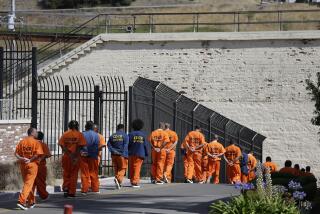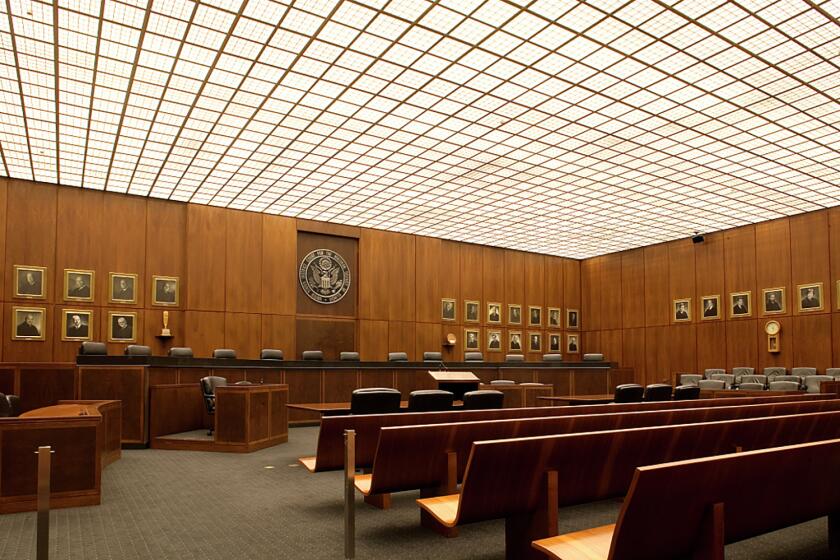California’s broken prisons
In the middle ages, captives were often tossed into dark holes called “oubliettes,” a term derived from the French word for “forget”: Once you were sent to an oubliette, you were out of sight and quickly forgotten. We have the same thing today in California, only we call them “prisons.”
Times staff writer Michael Rothfeld’s story Dec. 29 about high levels of arsenic found in the drinking water at Kern Valley State Prison would seem shocking if such disregard for health standards had occurred in nearly any other state, but in California it’s almost a matter of routine. Most residents would prefer to forget about our prisons and the 170,000-odd inmates they hold; it’s only when news emerges about riots or environmental disasters or financial crises that they rise, briefly, to the public consciousness. The trouble is, closing our eyes doesn’t make the prisons go away. So severe have their problems become after years of neglect that they’re about to give us a very painful reminder of their existence.
A panel of three federal judges is expected to decide any day now whether to release as many as 52,000 inmates from California prisons over two years to relieve overcrowding. It doesn’t take a criminologist to predict the result if this occurs: Thousands of criminals, many with drug addictions, will hit the streets in tough economic times, when even the ones who are employable will be unable to find a job, leading to a rise in crime. Californians will react, as they usually do, by passing more get-tough-on-crime laws, and more prisons probably will be built. They’ll quickly be crammed full, and the state will be stuck with billions in added costs, with no way to fund them. And so the cycle will continue.
Experts have been explaining how to avoid this mess for more than a decade, if only voters and lawmakers would listen. California must revise its probation and sentencing rules, rehabilitate prisoners by offering more job training and drug-rehab programs, repair its prisons’ substandard healthcare system and stop building prisons on contaminated sites, such as the Kern Valley facility in Delano.
Many of those fixes, especially involving the healthcare system, will cost a lot of money, something the state can ill afford as lawmakers try to plug an $18-billion budget gap. Yet spend we must: A federal receiver is demanding $8 billion to get the health system up to constitutionally acceptable standards, and federal judges have the power to order the state to put up the money. It’s an outrage to lay out huge sums on prisons even as we’re contemplating school closures, but Californians have no one but themselves to blame. Maybe now we can stop pretending the prisons don’t matter, or that we can solve our crime problems solely by incarceration.
More to Read
A cure for the common opinion
Get thought-provoking perspectives with our weekly newsletter.
You may occasionally receive promotional content from the Los Angeles Times.





